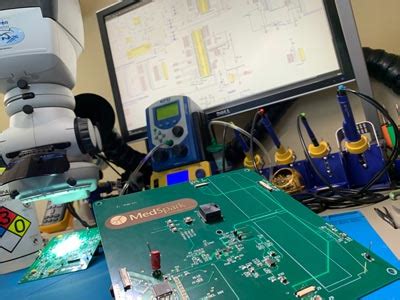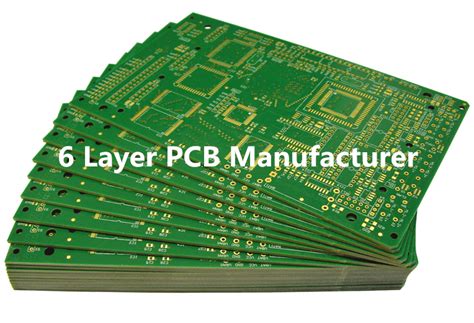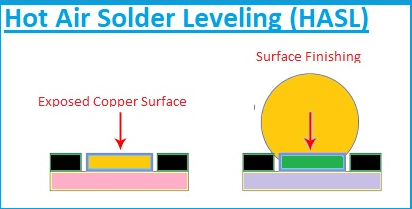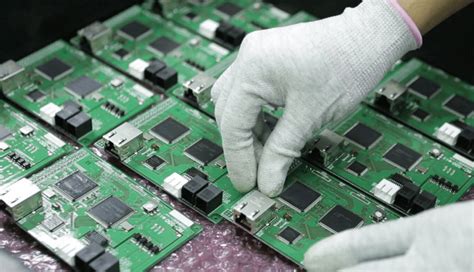Mastering IPC Class 3 PCB Manufacturing for High-Reliability Systems

Key Takeaways
When preparing for IPC Class 3 PCB manufacturing, understanding the rigorous requirements for high-reliability systems is critical. These standards ensure your boards meet extreme durability and precision demands, particularly for aerospace, medical, or military applications. You’ll need to prioritize tighter tolerances, advanced material selection, and meticulous inspection protocols to comply with IPC-6012 and IPC-A-610 guidelines.
Choosing the right PCB manufacturing companies is pivotal—look for suppliers with proven expertise in Class 3 production, as even minor defects can compromise system integrity. Cost optimization remains a challenge, but cutting corners on materials or testing risks non-compliance. Instead, focus on balancing PCB manufacturing cost with long-term reliability by streamlining design-for-manufacturability (DFM) processes.
"Partnering with certified manufacturers who specialize in high-reliability systems ensures adherence to Class 3 standards while mitigating production delays." Learn more about certification requirements
For a successful PCB manufacturing business targeting critical industries, invest in automated optical inspection (AOI) and X-ray testing to detect micro-voids or plating inconsistencies. Align your team’s workflow with military-grade documentation practices to simplify audits and certifications. By integrating these strategies, you’ll not only meet compliance but also build trust with clients requiring fail-safe performance in mission-critical environments.
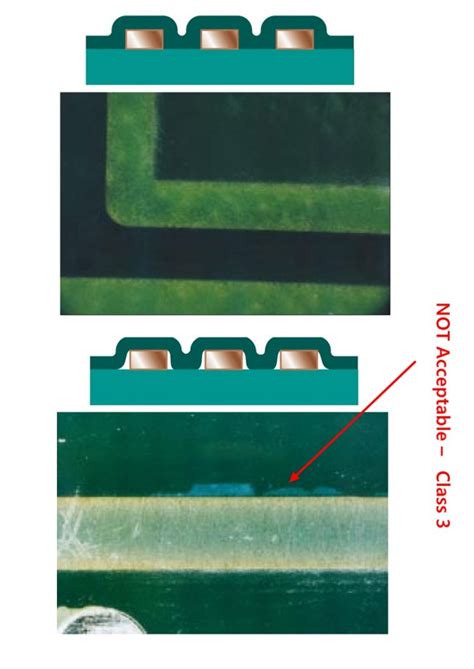
IPC Class 3 PCB Standards Overview
When designing PCB manufacturing processes for high-reliability systems, understanding IPC Class 3 standards is non-negotiable. These standards define stringent requirements for boards used in life-critical applications, such as aerospace avionics, medical implants, and military communication systems. Unlike Class 1 (general electronics) or Class 2 (durable equipment), Class 3 demands near-perfect fabrication to ensure uninterrupted performance under extreme conditions.
For PCB manufacturing companies, compliance with IPC-6012 and IPC-A-610 standards involves rigorous controls. You’ll need to prioritize tighter tolerances for trace widths, hole plating, and material integrity. For example, annular ring requirements for Class 3 are 30% stricter than Class 2, reducing the margin for error in drilling and alignment. Additionally, soldering defects like voids or incomplete fillets become unacceptable, requiring advanced inspection methods like automated X-ray testing.
| Key Class 3 Requirements | Impact on PCB Manufacturing |
|---|---|
| Minimum Annular Ring: 0.05mm | Higher precision drilling |
| Copper Plating: ≥25μm | Increased material costs |
| Zero Acceptable Voiding | Enhanced quality control steps |
Balancing PCB manufacturing cost with these demands requires expertise. Partnering with specialists in PCB manufacturing business ensures adherence without compromising scalability. By focusing on traceability and documentation—critical for IPC certification—you mitigate risks in high-stakes industries where failure is not an option. This foundational understanding sets the stage for mastering design and production strategies tailored to Class 3’s exacting standards.
High-Reliability PCB Design Essentials
When designing boards for mission-critical systems, PCB manufacturing standards become non-negotiable. IPC Class 3 compliance demands rigorous attention to trace widths, material selection, and thermal management to ensure zero defects in harsh environments. You’ll need to partner with experienced PCB manufacturing companies that specialize in aerospace or medical-grade production, as their expertise in multilayer stackups and impedance control directly impacts signal integrity.
A key challenge lies in balancing PCB manufacturing cost with uncompromising quality. This requires optimizing designs for manufacturability early—avoiding unnecessary via-in-pad structures or ultra-fine pitch components that escalate complexity. Advanced simulation tools help validate thermal cycling performance and vibration resistance before prototyping, reducing costly redesigns. For military or medical applications, strict documentation trails and material traceability add layers to the PCB manufacturing business process, but these steps ensure compliance with IPC-6012’s lifetime reliability requirements.
Transitioning from design to production? Prioritize DFM (Design for Manufacturing) audits with your fabricator to identify potential failure points. Tight tolerances on annular rings and copper plating thickness aren’t just checkboxes—they’re what separate functional boards from those that survive decades in the field. By aligning your design strategy with Class 3 standards upfront, you mitigate risks in later stages while meeting the relentless scrutiny of high-reliability industries.
Aerospace PCB Manufacturing Best Practices
When designing PCB manufacturing processes for aerospace applications, you must prioritize zero-defect tolerance while balancing PCB manufacturing cost constraints. Start by selecting materials with extreme temperature stability and low outgassing properties—critical for systems exposed to vacuum or rapid thermal shifts. Rigorous traceability protocols are non-negotiable; every layer, via, and component must be documented to meet IPC-6012’s Class 3 verification requirements.
Leading PCB manufacturing companies implement automated optical inspection (AOI) paired with X-ray testing to detect micro-cracks or plating voids invisible to the human eye. For high-density interconnects (HDIs), use laser-drilled microvias with controlled impedance tolerances to maintain signal integrity in avionics. To optimize PCB manufacturing business workflows, adopt panelization strategies that minimize material waste without compromising board separation accuracy.
Remember, thermal cycling tests and vibration simulations should mirror mission profiles—whether for satellites or hypersonic vehicles. Partnering with suppliers who understand MIL-PRF-31032 and AS9100 standards ensures compliance across your supply chain. By aligning design, material selection, and testing rigor, you achieve the reliability demanded by aerospace systems while managing PCB manufacturing cost effectively.
Medical Device Compliance Strategies
When developing PCB manufacturing processes for medical devices, you must prioritize adherence to life-critical regulatory frameworks. Compliance with standards like ISO 13485 and IEC 60601 isn’t optional—it’s foundational for ensuring patient safety and avoiding costly recalls. PCB manufacturing companies specializing in medical applications often integrate traceability systems, such as lot-number tracking, to meet FDA 21 CFR Part 11 requirements. This ensures every component, from substrate materials to solder masks, is documented and auditable.
Balancing PCB manufacturing cost with reliability demands meticulous material selection. For instance, using high-Tg laminates or halogen-free substrates may raise initial expenses but minimizes failure risks in sterilization cycles or implantable devices. Partnering with PCB manufacturing business experts who understand biocompatibility testing and accelerated life testing can streamline validation phases. Remember, shortcuts in cleanliness protocols (e.g., ionic contamination control) or solder joint inspections could compromise hermetic sealing—a non-negotiable for devices exposed to bodily fluids.
Ultimately, aligning design choices with IPC Class 3 criteria ensures your boards withstand extreme environmental stresses while maintaining compliance across their lifecycle. Transitioning from prototype to mass production? Prioritize suppliers with proven expertise in medical-grade PCB manufacturing to avoid costly redesigns or regulatory roadblocks.
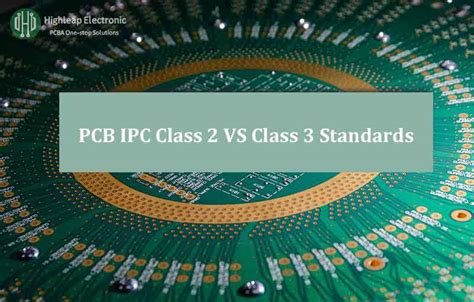
Military-Grade PCB Production Guidelines
When designing PCB manufacturing processes for military applications, you must prioritize zero margin for error. Military systems demand adherence to IPC Class 3 standards, which enforce stringent criteria for material selection, traceability, and defect tolerance. PCB manufacturing companies specializing in defense contracts typically employ advanced techniques like laser drilling for microvias and automated optical inspection (AOI) to ensure compliance with Class 3A requirements under IPC-6012.
Key considerations include using high-reliability substrates such as polyimide or ceramic-filled laminates, which withstand extreme temperatures and mechanical stress. Controlled impedance routing and hermetic sealing become critical for boards exposed to harsh environments. While PCB manufacturing cost may rise due to these specifications, the investment ensures mission-critical reliability.
To optimize your PCB manufacturing business for military projects, integrate rigorous testing protocols like thermal cycling, vibration testing, and burn-in simulations. Partnering with certified suppliers for materials and components minimizes supply chain risks. Remember, military-grade production isn’t just about meeting standards—it’s about exceeding them to guarantee performance under the most demanding conditions. Transitioning from commercial to defense-focused manufacturing requires aligning every process step with traceability and documentation mandates outlined in MIL-PRF-31032 and MIL-STD-883.
IPC-6012 Certification Requirements Explained
To achieve IPC-6012 certification for Class 3 PCB manufacturing, you must meet stringent criteria that govern design, materials, and production processes. This standard mandates zero defects in critical areas like conductor spacing, hole wall integrity, and solderability, ensuring boards withstand extreme environments. PCB manufacturing companies targeting aerospace or medical sectors must validate compliance through rigorous testing—including thermal stress tests, microsection analysis, and electrical performance verification—documented in detailed process control records.
Managing PCB manufacturing cost while adhering to these requirements demands precision at every stage. For instance, using high-grade substrates and implementing advanced plating techniques directly impacts material expenses but is non-negotiable for reliability. Certification also requires traceability systems to track components from raw materials to finished products, a key factor for audits in regulated industries.
If you’re scaling a PCB manufacturing business for high-reliability markets, invest in employee training programs certified by IPC. Technicians must master acceptance criteria for annular ring integrity and copper thickness, as even minor deviations can disqualify boards. Partnering with certified suppliers and maintaining quality management systems (QMS) aligned with IPC-6012 not only streamlines compliance but strengthens your position in competitive, mission-critical sectors.
Class 3 PCB Quality Control Techniques
To ensure compliance with IPC Class 3 standards, PCB manufacturing processes require rigorous quality control protocols. High-reliability systems demand near-perfect performance, which starts with verifying material traceability, layer alignment, and surface finish integrity. Advanced inspection tools like automated optical inspection (AOI) and X-ray imaging are critical for detecting micro-cracks, voids, or solder mask inconsistencies that could compromise reliability.
When partnering with PCB manufacturing companies, confirm they implement statistical process control (SPC) to monitor variables like copper thickness and hole wall quality. These metrics directly impact thermal resilience and electrical performance in extreme environments. For example, aerospace or medical applications require tolerances tighter than ±1 mil, necessitating real-time adjustments during fabrication.
Balancing PCB manufacturing cost with quality involves optimizing design-for-manufacturability (DFM) reviews. Eliminating unnecessary via-in-pad structures or minimizing impedance mismatches reduces rework rates. However, Class 3 standards often mandate additional testing phases—such as cross-sectioning or thermal cycling—which can increase expenses but are non-negotiable for mission-critical systems.
Documentation is equally vital. Certifications like IPC-6012 and A-610 must be validated through traceable records of every production batch. This ensures accountability across the PCB manufacturing business, especially when failures could endanger lives in military or medical devices. By integrating these techniques, you maintain the integrity of high-reliability PCBs while meeting stringent industry benchmarks.

Advanced Assembly for Critical Systems
When working with PCB manufacturing for mission-critical applications, every step of the assembly process must prioritize precision and traceability. IPC Class 3 requirements demand tighter tolerances, stricter material controls, and advanced inspection protocols compared to lower classes. For aerospace or medical systems, even minor defects in solder joints or layer alignment can compromise reliability, making collaboration with experienced PCB manufacturing companies non-negotiable.
To meet these standards, you’ll need specialized processes like laser drilling for microvias, sequential lamination for high-density interconnects, and automated optical inspection (AOI) for defect detection. Controlled impedance routing and hermetic sealing are often critical for systems exposed to extreme environments. While these techniques elevate PCB manufacturing cost, they ensure compliance with IPC-6012 and IPC-J-STD-001 for high-reliability applications.
Selecting materials with low thermal expansion coefficients and implementing design-for-manufacturability (DFM) checks early in the process helps avoid rework. Partnering with PCB manufacturing business providers that offer full documentation, including material certifications and process validation reports, streamlines audits for military or medical approvals. Remember, achieving Class 3 compliance isn’t just about meeting specs—it’s about building systems that withstand decades of operation without failure.

Conclusion
When navigating the complexities of PCB manufacturing for high-reliability systems, adherence to IPC Class 3 standards is non-negotiable. Whether you’re collaborating with specialized PCB manufacturing companies or managing an in-house operation, the precision demanded by aerospace, medical, or military applications requires rigorous attention to detail. While PCB manufacturing cost often influences decisions, compromising on material quality or process controls risks catastrophic failures in critical environments.
Your approach must balance technical compliance with operational efficiency. For instance, optimizing design layouts to minimize waste or leveraging advanced testing protocols can mitigate expenses without sacrificing reliability. In the PCB manufacturing business, reputation hinges on delivering defect-free boards that meet IPC-6012’s stringent criteria. This demands not only state-of-the-art equipment but also continuous training for personnel to interpret and implement evolving standards.
Ultimately, success in this field lies in recognizing that high-reliability systems leave no room for error. By prioritizing traceability, documentation, and partnerships with certified suppliers, you ensure your products withstand the harshest conditions. As technology advances, staying ahead means embracing innovation while anchoring every decision in the foundational requirements of IPC Class 3—where excellence isn’t optional, but imperative.
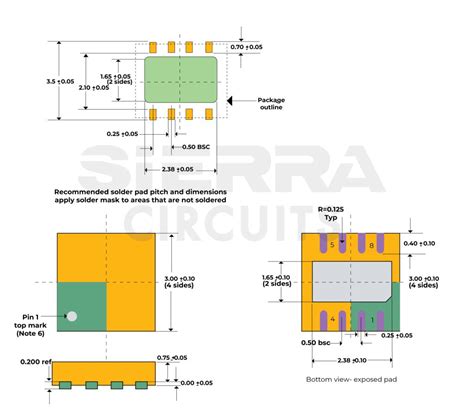
Frequently Asked Questions
What distinguishes IPC Class 3 from lower classes in PCB manufacturing?
IPC Class 3 standards demand tighter tolerances, stricter inspection criteria, and enhanced reliability for high-risk applications like aerospace or medical devices. Unlike Class 1 or 2, PCB manufacturing for this tier requires advanced processes to minimize defects and ensure uninterrupted performance in mission-critical systems.
How do you select reliable PCB manufacturing companies for Class 3 projects?
Look for suppliers with documented expertise in IPC-6012 and IPC-A-610 compliance, specialized testing equipment, and certifications for military or medical sectors. Verify their track record in managing PCB manufacturing cost without compromising traceability or material quality.
Why does IPC Class 3 PCB manufacturing cost more than standard projects?
Higher costs stem from premium materials, extended testing (e.g., cross-section analysis, microsectioning), and rigorous documentation. PCB manufacturing business models prioritizing Class 3 often invest in automated optical inspection (AOI) and X-ray systems to meet defect-free targets.
Can existing PCB manufacturing workflows be adapted for Class 3 compliance?
Yes, but upgrades like cleaner production environments, solder mask thickness controls, and via reliability testing are often necessary. Partnering with PCB manufacturing companies experienced in transitioning from Class 2 to 3 ensures smoother compliance with minimal operational disruption.
Explore Our Expertise in High-Reliability Solutions
For tailored guidance on IPC Class 3 requirements or to request a project review, please click here to connect with our engineering team.


